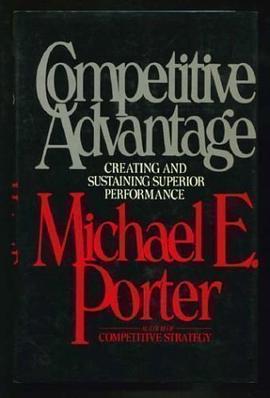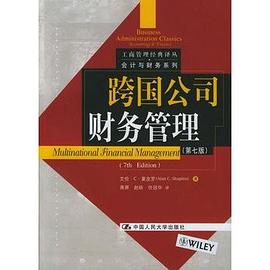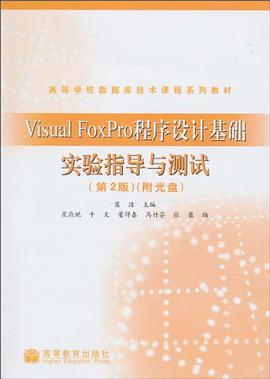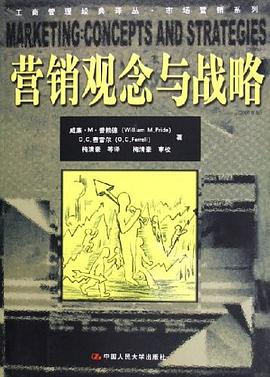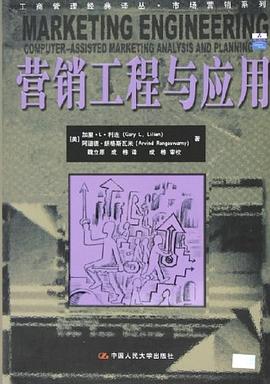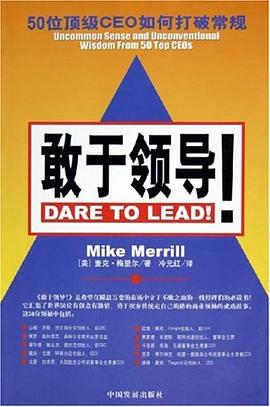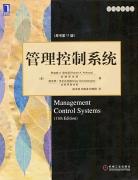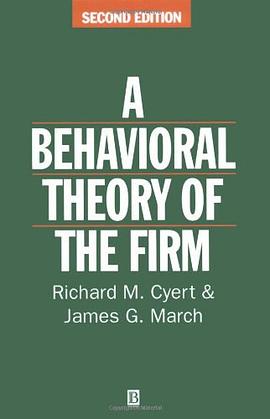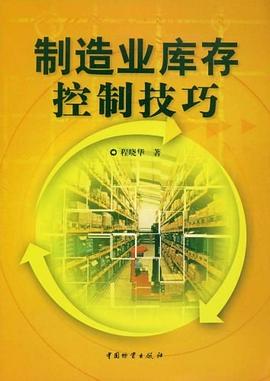Contents
Preface
Chapter l Competitive Strategy: The Core Concepts
THE STRUCTURAL ANALYSlS OF INDUSTRlES
Industry Structure and Buyer Needs
Industry Structure and the Supply/Demand Balance
GENERlC COMPETlTlVE STRATEGlES
Cost Leadership
Differentiation
Focus
Stuck in the Middle
Pursuit ofMore Than One Generic Strategy
Sustainability
Generic Strategies and industry Evolution
Generic Strategies and Organizational Structure
Generic Strategies and the Strategic Planning Process
OVERVlEW OF THlS BOOK
PART l PRlNClPLES OF COMPETlTlVE ADVANTAGE
Chapter 2 The Value Chain and Competitive Advantage
THE VALUE CHAlN
Identifying Value Activities
Defining the Value Chain
Linkages within The Value Chain
Vertical Linkages
The Buyer's Value Chain
COMPETlTlVE SCOPE AND THE VALUE CHAlN
Segment Scope
Vertical Scope
Geographic Scope
industry Scope
Coalitions and Scope
Competitive Scope and Business Definition
The Value Chain and industry Structure
THE VALUE CHAlN AND ORGANlZATlONAL
STRUCTURE
Chapter 3 Cost Advantage
THE VALUE CHAlN AND COST ANALYSlS
Defining the Value Chain for Cost Analysis
Assigning Costs and Assets
First Cut Analysis of Costs
COST BEHAVlOR
Cost Drivers
The Cost of Purchased inputs
Segment Cost Behavior
Cost Dynamics
COST ADVANTAGE
Determining the Relative Cost of Competitors
Gaining Cost Advantage
Sustainability of Cost Advantage
Implementation and Cost Advantage
Pitfalls in Cost Leadership Strategies
STEPS IN STRATEGlC COST ANALYSlS
Chapter 4 Differentiation
SOURCES OF DlFFERENTlATlON
Differentiation and The Value Chain
Drivers of Uniqueness
THE COST OF DlFFERENTlATlON
BUYER VALUE AND DlFFERENTlATlON
Buyer Value
The Value Chain and Buyer Value
Lowering Buyer Cost
Raising Buyer Performance
Buyer Perception of Value
Buyer Value and the Real Buyer
Buyer Purchase Criteria
identifying Purchase Criteria
DlFFERENTlATlON STRATEGY
Routes to Differentiation
The Sustainability of Differentiation
Pitfalls in Differentiation
STEPS IN DlFFERENTlATlON
Chapter 5 Technology and Competitive Advantage
TECHNOLOGY AND COMPETlTlON
Technology and The Value Chain
Technology and Competitive Advantage
Technology and industry Structure
TECHNOLOGY STRATEGY
The Choice of Technologies to Develop
Technological Leadership or Followership
Licensing of Technology
TECHNOLOGlCAL EvOLUTlON
Continuous Versus Discontinuous Technological Evolution
Forecasting Technological Evolution
FORMULATlNG TECHNOLOGlCAL STRATEGY
Chapter 6 Competitor Selection
THE STRATEGlC BENEFlTS OF COMPETlTORS
Increasing Competitive Advantage
Improving Current industry Structure
Aiding Market Development
Deterring Entry
WHAT MAKES A "GOOD" COMPETlTOR?
Tests ofa Good Competitor
"Gopd" Market Leaders
Diagnosing Good Competitors
INFLUENClNG THE PATTERN OF COMPETlTORS
Damaging Good Competitors in Battling Bad Ones
Changing Bad Competitors into Good Ones
THE OPTlMAL MARKET CONFlGURATlON
The Optimal Competitor Configuration
Maintaining Competitor Viability
Moving toward the ideal Competitor Configuration
Maintaining industry Stability
PlTFALLS IN COMPETlTOR SELECTlON
PART ll COMPETlTlVE SCOPE WlTHlN AN
INDUSTRY
Chapter 7 Industry Segmentation and Competitive
Advantage
BASES FOR INDUSTRY SEGMENTATlON
Stmctural Bases For Segmentation
Segmentation Variables
Finding New Segments
THE INDUSTRY SEGMENTATlON MATRlX
Relationships Among Segmentation Variables
Combining Segmentation Matrices
INDUSTRY SEGMENTATlON AND COMPETlTlVE
STRATEGY
The Attractiveness ofa Segment
Segment interrelationships
Segment interrelationships and Broadly-Targeted Strategies
The Choice of Focus
The Feasibility of New Segments to Focus On
The Sustainability ofa Focus Strategy
Pitfalls and Opportunities for Focusers and Broadly-Targeted
Competitors
INDUSTRY SEGMENTATlON AND INDUSTRY
DEFlNlTlON
Chapter 8 Substitution
IDENTlFYlNG SUBSTlTUTES
THE ECONOMlCS OF SUBSTlTUTlON
Relative Value/Price
Switching Costs
Buyer Propensity to Substitute
Segmentation and Substitution
CHANGES IN THE SUBSTlTUTlON THREAT
Substitution and Overall industry Demand
Substitution and industry Structure
THE PATH OF SUBSTlTUTION
Segmentation and the Substitution Path
Substitution Forecasting Models
SUBSTlTUTlON AND COMPETlTlVE STRATEGY
Promoting Substitution
Defense Against Substitutes
Industry Versus Firm Substitution Strategy
Pitfalls in Strategy Against Substitutes
PART lll CORPORATE STRATEGY AND
COMPETlTlVE ADVANTAGE
Chapter 9 Interrelationships among Business Units
THE GROWlNG IMPORTANCE OF HORlZONTAL
STRATEGY
INTERRELATlONSHlPS AMONG BUSlNESS UNlTS
TANGlBLE INTERRELATlONSHlPS
Sharing and Competitive Advantage
The Costs ofSharing
Difficulty of Matching
Identifying Tangible interrelationships
INTANGlBLE INTERRELATlONSHlPS
COMPETlTOR INTERRELATlONSHlPS
Multipoint Competitors in Unrelated industries
Multipoint Competition in Related industries
Competitors with Different Patterns of interrelationships
Forecasting Potential Competitors
Chapter lO Horizontal Strategy
THE NEED FOR ExPLlClT HORlZONTAL STRATEGY
Formulating Horizontal Strategy
INTERRELATlONSHlPS AND DlVERSlFlCATlON
STRATEGY
Diversification Based on Tangible interrelationships
Diversification Through Beachheads
Diversification and Corporate Resources
PlTFALLS IN HORlZONTAL STRATEGY
Pitfalls in ignoring interrelationships
Pitfalls in Pursuing interrelationships
Chapter ll Achieving Interrelationships
IMPEDlMENTS TO ACHlEVlNG INTERRELATlONSHlPS
Sources of impediments
interrelationships and Equity
Differences in impediments among Firms
ORGANlZATlONAL MECHANISMS FOR ACHlEVlNG
INTERRELATlONSHlPS
Horizontal Structure
Horizontal Systems
Horizontal Human Resource Practices
Horizontal Conflict Resolution Processes
The Corporate Role in Facilitating interrelationships
interrelationships and the Mode of Diversification
MANAGlNG HORlZONTAL ORGANlZATlON
Promising Examples
Japanese Firms and interrelationships
A New Organizational Form
Chapter 12 Complementary Products and Competitive
Advantage
CONTROL OVER COMPLEMENTARY PRODUCTS
Competitive Advantages From Controlling Complements
Problems of Controlling Complements
Control Over Complements and industry Evolution
identifying Strategically important Complements
BUNDLlNG
Competitive Advantages of Bundling
Risks of Bundling
Bundled Versus, Unbundled Strategies
Bundling and industry Evolution
Strategic implications of Bundling
CROSS SUBSlDlZATlON
Conditions Favoring Cross Subsidization
Risks of Cross Subsidization
Cross Subsidization and industry Evolution
Strategic implications of Cross Subsidization
COMPLEMENTS AND COMPETlTlVE STRATEGY
PART iV iMPLlCATlONS FOR OFFENSlVE AND
DEFENSlVE COMPETlTlVE STRATEGY
Chapter 13 Industry Scenarios and Competitive Strategy under
Uncertainty
Scenarios as a Planning Tool
industry Scenarios
CONSTRUCTlNG INDUSTRY SCENARlOS
identifying industry Uncertainties
independent Versus Dependent Uncertainties
identifying a Set of Scenarios
Consistency of Assumptions
Analyzing Scenarios
introducing Competitor Behavior into Scenarios
The Number of Scenarios To Analyze
Attaching Probabilities to Scenarios
Summary Characteristics of industry Scenarios
INDUSTRY SCENARlOS AND COMPETlTlVE STRATEGY
Strategic Approaches Under Scenarios
Combined and Sequenced Strategies
The Choice ofStrategy Under industry Scenarios
Scenario Variables and Market intelligence
SCENARlOS AND THE PLANNlNG PROCESS
Corporate Role in Constructing industry Scenarios
industry Scenarios and Creativity
Chapter 14 Defensive Strategy
THE PROCESS OF ENTRY OR REPOSlTlONlNG
DEFENSlVE TACTlCS
Raising Structural Barriers
increasing Expected Retaliation
Lowering the inducement for Attack
EVALUATlNG DEFENSlVE TACTlCS
DEFENSlVE STRATEGY
Deterrence
Response
Response to Price Cutting
Defense or Disinvest
Pitfalls in Defense
Chapter 15 Attacking an Industry Leader
CONDlTlONS FOR ATTACKlNG A LEADER
AVENUES FOR ATTACKlNG LEADERS
Reconfiguration
Redefinition
Pure Spending
Alliances To Attack Leaders
IMPEDlMENTS TO LEADER RETALlATlON
SlGNALS OF LEADER VULNERABlLlTY
Industry Signals
Leader Signals
ATTACKlNG LEADERS AND INDUSTRY STRUCTURE
Bibliography
Index
· · · · · · (
收起)
